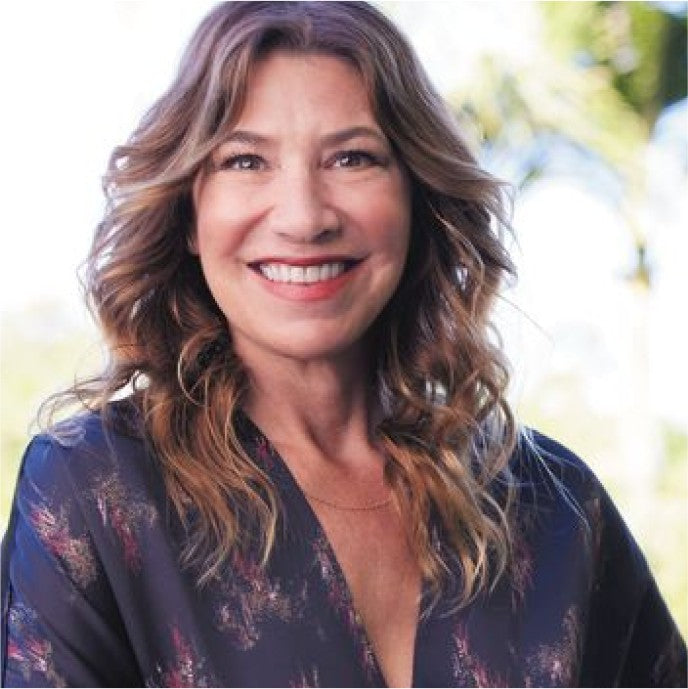“The vagus nerve is part of our parasympathetic nervous system, which is the rest, digest, and heal part of our nervous system. It’s activated when we're calm, hugging our kids, or meditating. That part is always in balance with what's called the sympathetic nervous system. This is the fight or flight part of our nervous system. We need the sympathetic. When we're fighting an infection, when we have a deadline due, you bet we want a little stress to get our butt in gear and get things going. But then we need that to go down, and we need to restore and heal.
In our modern world — and this is for children and adults — our sympathetic is always up. Every day, we feel like there's a saber tooth tiger about to attack. We are living in sympathetic overdrive almost all the time. So our sympathetic nervous system gets plenty of exercise, but our parasympathetic doesn’t get enough exercise.
So how do we engage our vagus nerve? We need to do it every single day. We need to practice, practice, practice. And there are simple things that we can do. I know some of you are thinking, ‘Well sure, I meditate, but I can't expect my kids to meditate for half an hour. They can't even sit still at dinner time. How can they sit still and meditate?’ That's not what engaging the vagus nerve is about for kids.
For kids, there's a few different ways. One thing we can do that's really easy is to teach them how to breathe with their belly: diaphragmatic breathing. That has been shown to engage the vagus nerve. And how do we do that? Most of us breathe up here, shallow little breaths with our shoulders. So we teach them, and ourselves, to keep our shoulders down and relax. And when we take a slow breath in, we imagine a balloon in our belly and our balloon expands, and then as we exhale slowly, the balloon deflates. One hand on your belly just to make sure your chest isn't moving. Just doing that for a few minutes a day is your vagus nerve practice. You can do that throughout the day, minutes at a time.
Another way that we can engage our vagus nerve is to practice gratitude. It sounds silly, but it's not. There are studies showing that just this simple expression of gratitude — something called a loving kindness meditation where you just say four simple sentences and accept gratitude — improves vagus nerve tone, improves sense of wellbeing, lowers your stress hormone cortisol. And we can do this in five minutes.
“There are studies showing that just this simple expression of gratitude improves vagus nerve tone, improves sense of wellbeing, lowers your stress hormone cortisol.”
And then another tool is called Cognitive Behavioral Techniques. CBT is one of the best ways to improve vagus nerve tone. Therapists are trained in this, but you can get any of Dawn Huebner’s books. She's one of my favorite child psychologists ever. She has self help books for kids, these little workbooks to teach them, in a really fun way, CBT tools when they're worried or feeling really negative or grumpy or they can't fall asleep. So get those workbooks and go through them with your kids. They are tools that you as an adult can benefit from.
And then the final piece, which is sort of your entry into meditation, is mindfulness. Meditation starts with stopping and paying attention. That's being mindful. So this you can do in five minutes when you're walking your kids to school.
We've all been taught to stop, look, and listen when we cross the street. So that's what I call it, some people call it the five senses meditation. Give yourself permission to stop and notice what's going around you and in you. And then look with all of your senses. Close your eyes, because visual input is what we use the most, and use all of your other senses first. So listen with your ears. What do you hear? Did you hear the birds chirping? Did you just hear that car passing by? And then notice what you smell. Do you smell the fresh grass? Did you smell someone's fireplace? Then you notice what we taste. The breakfast you just had or maybe it's the minty toothbrush that you just brushed your teeth with. Then you notice what we feel on our skin. Do you notice the tag on your shirt? Or do you notice your hair blowing in the wind? And then finally, you open your eyes and we notice what you see. And oftentimes you will see something that you had never seen before. And then we listen to how we're feeling right in that moment to solidify that experience.
That ability to stop and notice and regulate yourself is one of the most important tools for success in life. We can do that with our kids and for ourselves. Those are all simple, easy ways to feed their vagus nerve. Then when they're older, teach them how to meditate or take a meditation class together. Starting with small steps and having them see how powerful it can be is the best way to get them where you want them to be later.”
Sign Up, Nerd Out
Get wellness tips, education, and recipes
delivered straight to your inbox.
Get wellness tips, education,
and recipes delivered
straight to your inbox.
Want more? This is an excerpt from a longer convo with Elisa Song, MD — listen or watch here!
















